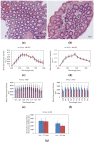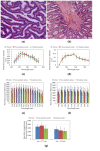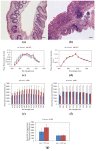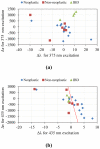Fluorescence lifetime spectroscopy of tissue autofluorescence in normal and diseased colon measured ex vivo using a fiber-optic probe
- PMID: 24575345
- PMCID: PMC3920881
- DOI: 10.1364/BOE.5.000515
Fluorescence lifetime spectroscopy of tissue autofluorescence in normal and diseased colon measured ex vivo using a fiber-optic probe
Abstract
We present an ex vivo study of temporally and spectrally resolved autofluorescence in a total of 47 endoscopic excision biopsy/resection specimens from colon, using pulsed excitation laser sources operating at wavelengths of 375 nm and 435 nm. A paired analysis of normal and neoplastic (adenomatous polyp) tissue specimens obtained from the same patient yielded a significant difference in the mean spectrally averaged autofluorescence lifetime -570 ± 740 ps (p = 0.021, n = 12). We also investigated the fluorescence signature of non-neoplastic polyps (n = 6) and inflammatory bowel disease (n = 4) compared to normal tissue in a small number of specimens.
Keywords: (120.3890) Medical optics instrumentation; (170.2680) Gastrointestinal; (170.3650) Lifetime-based sensing; (300.6500) Spectroscopy, time-resolved; (300.6540) Spectroscopy, ultraviolet; (300.6550) Spectroscopy, visible.
Figures








References
-
- P. Boyle and B. Levin, World Cancer Report 2008 (World Health Organisation - International Agency for Research on Cancer, Geneva, 2008).
Grants and funding
LinkOut - more resources
Full Text Sources
Other Literature Sources
